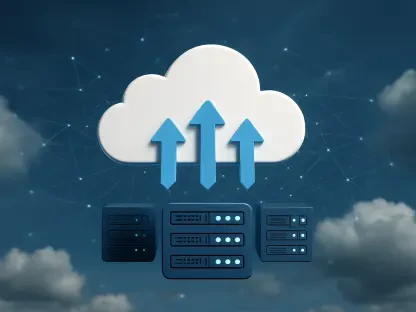The cybersecurity landscape in 2024 is marked by a crucial challenge: balancing innovative features with ease of use. As organizations strive to protect their digital assets from increasingly sophisticated threats, there is a growing recognition that the effectiveness of cybersecurity tools is significantly hampered by poor user experience (UX). Traditional cybersecurity solutions, despite their powerful capabilities, often compromise UX due to complex interfaces, prolonged deployment times, and a dependence on large, specialized teams for management. These issues have led to inefficiencies that ultimately detract from the overall effectiveness of security measures. As we delve into this subject, it becomes evident that modernizing the UX for administrators is a key aspect of the next evolution in cybersecurity.
The Struggle with Traditional Cybersecurity Solutions
Traditional cybersecurity systems, while robust in features, present significant challenges for administrators who must navigate their complexities daily. Complex user interfaces, extended deployment times, and a heavy reliance on specialized teams create a significant administrative burden. One illustrative example is the implementation of web filtering policies on many legacy platforms, which can take up to an hour—consuming valuable time and resources. These systems, often designed with trends such as zero trust and secure access service edge (SASE) in mind, tend to overlook the daily needs of those managing these tools, leading to labor-intensive processes and operational inefficiencies.
Despite their potential, these traditional solutions can become cumbersome, requiring substantial time and effort to manage effectively. Administrators are often bogged down by technical micromanagement rather than focusing on broader security strategies. This scenario not only wastes resources but also heightens the risk of human error, which can compromise security. As threats become more sophisticated and persistent, the need for cybersecurity tools that streamline workflows and simplify management processes becomes increasingly evident.
This struggle highlights the importance of shifting towards cybersecurity solutions that prioritize user experience. Addressing these pain points can significantly improve operational efficiency, allowing security teams to respond more swiftly and effectively to emerging threats. The focus must shift from adding more features to making those features accessible and easy to use for administrators.
The Shift Towards User-Centered Design
Modern cybersecurity solutions are increasingly prioritizing user-centered design to streamline workflows and reduce complexity. Next-generation tools like Cloud Access Security Brokers (CASB) and Secure Web Gateways (SWG) focus on the user experience, aiming to optimize the administrator’s daily operations. These contemporary platforms achieve this by reducing latency, simplifying policy updates, and leveraging AI-driven insights. The result is a more efficient operation where security teams can concentrate on overarching security strategies instead of the minutiae of day-to-day management.
A notable advancement in modern CASB solutions is their use of machine learning to monitor user activity in real time, detect anomalies, and flag potential threats. This not only provides security professionals with actionable insights but also minimizes the need for manual intervention. By automating routine tasks and providing real-time notifications, these systems free up administrators to focus on more strategic aspects of cybersecurity, thereby increasing overall efficiency and effectiveness.
The shift to user-centered design is part of a broader trend toward improving usability and operational efficiency in cybersecurity tools. By addressing the daily pain points of administrators, modern platforms enable faster responses to threats and more efficient security operations. This approach not only enhances the security posture of organizations but also reduces the administrative burden on security teams, allowing them to focus on strategic initiatives.
Seamless Integration and Rapid Deployment
A key differentiator between modern CASB solutions and their legacy counterparts is their ability to seamlessly integrate with existing cloud infrastructures. While older systems often require extensive reconfiguration and entail significant downtime during deployment, newer products offer rapid and straightforward setup processes without compromising on security. This ease of deployment not only mitigates business disruptions but also allows for faster and more efficient implementation of security protocols, which is critical in today’s fast-paced threat environment.
The focus on seamless integration is driven by the need to minimize disruptions and ensure that security measures can be quickly and effectively deployed. Modern cybersecurity platforms are designed to work harmoniously with existing infrastructures, reducing the need for extensive reconfiguration and minimizing the potential for downtime. This approach not only enhances operational efficiency but also ensures that security measures are implemented swiftly, reducing the window of vulnerability.
Reports from Forrester and Gartner underscore the increasing importance of usability in cybersecurity products. Gartner’s Market Share: Security Software Worldwide report indicates that cloud security experienced the highest growth at 31.8% in 2023, reflecting a decision-making pivot toward usability. Tools that balance functionality with ease of use are outpacing legacy systems, which, though feature-rich, can be cumbersome to manage and deploy.
The Importance of Intuitive Interfaces
The focus on user experience is a common theme underscored by Forrester and Gartner reports alike. Companies offering simple, intuitive interfaces are gaining an edge over legacy solutions that, despite their feature richness, can be challenging to manage. For security professionals, real value lies in solutions that marry functionality with ease of use, impressing IT and cybersecurity personnel by being both reliable and straightforward to manage.
Legacy systems, while retaining their extensive capabilities, often struggle with prolonged deployment times, intricate user interfaces, and a constant need for manual interventions. In contrast, modern cybersecurity platforms enable quicker implementation and provide real-time notifications, proving to be more practical for today’s fast-paced security environment. By reducing the complexity of these tools, modern solutions empower security teams to manage their environments more efficiently and focus on the strategic aspects of cybersecurity.
The emphasis on intuitive interfaces and ease of use reflects a broader recognition that the effectiveness of cybersecurity measures depends not only on their technical capabilities but also on their usability. Solutions that are difficult to manage can lead to inefficiencies and increase the risk of human error, ultimately compromising security. By prioritizing user experience, modern cybersecurity tools enhance the effectiveness and efficiency of security teams, enabling them to respond more quickly and effectively to emerging threats.
Transitioning to Modern Solutions
To successfully transition to more modern solutions, organizations should start by thoroughly assessing their current cybersecurity tools and identifying major pain points such as slow deployment times, clunky interfaces, and the necessity for large management teams. Recognizing these gaps can help prioritize areas where updates are urgently needed. In selecting new tools, emphasis should be placed on ease of use and seamless integration with existing cloud infrastructure. This approach ensures that new systems can be implemented quickly and effectively, minimizing disruptions and enhancing operational efficiency.
Organizations should engage vendors that offer comprehensive onboarding and training to ensure a smooth transition. Pilot programs can be utilized to test new tools in a controlled setting prior to full deployment, allowing teams to familiarize themselves with the new systems and identify any potential issues before they become critical. An essential part of this transition involves instituting a strategy for continuous monitoring and evaluation of new systems to identify areas for improvement. This allows teams to adjust as cybersecurity threats evolve, ensuring that the new tools remain effective and relevant.
The transition to modern solutions is not just about adopting new technology; it also involves a shift in mindset. Organizations must recognize the importance of user experience in the effectiveness of cybersecurity measures and prioritize tools that enhance usability. By doing so, they can improve the efficiency and effectiveness of their security teams, enabling them to respond more quickly and effectively to emerging threats and ensuring that their digital assets are protected.
The Future of Cybersecurity
Modern cybersecurity solutions are increasingly focusing on user-centered design to simplify workflows and lessen complexity. Advanced tools like Cloud Access Security Brokers (CASB) and Secure Web Gateways (SWG) emphasize user experience, optimizing administrators’ daily tasks. These contemporary platforms achieve this by reducing latency, streamlining policy updates, and using AI-driven insights. The outcome is a more efficient system allowing security teams to focus on overarching strategies rather than the daily grind.
A significant leap in CASB solutions is their application of machine learning to monitor user activity in real time, detecting anomalies and flagging potential threats. This offers security professionals actionable insights, minimizing the necessity for manual interventions. By automating routine tasks and delivering real-time notifications, these systems allow administrators to concentrate on more strategic cybersecurity aspects, boosting overall efficiency and effectiveness.
The shift to user-centered design echoes a broader trend toward enhancing usability and operational efficiency in cybersecurity tools. By tackling administrators’ daily pain points, modern platforms enable quicker threat responses and more efficient security operations. This methodology not only strengthens organizations’ security postures but also alleviates administrative burdens, allowing security teams to focus on strategic initiatives.









